
How to Include Strength Training in Your Running Workout
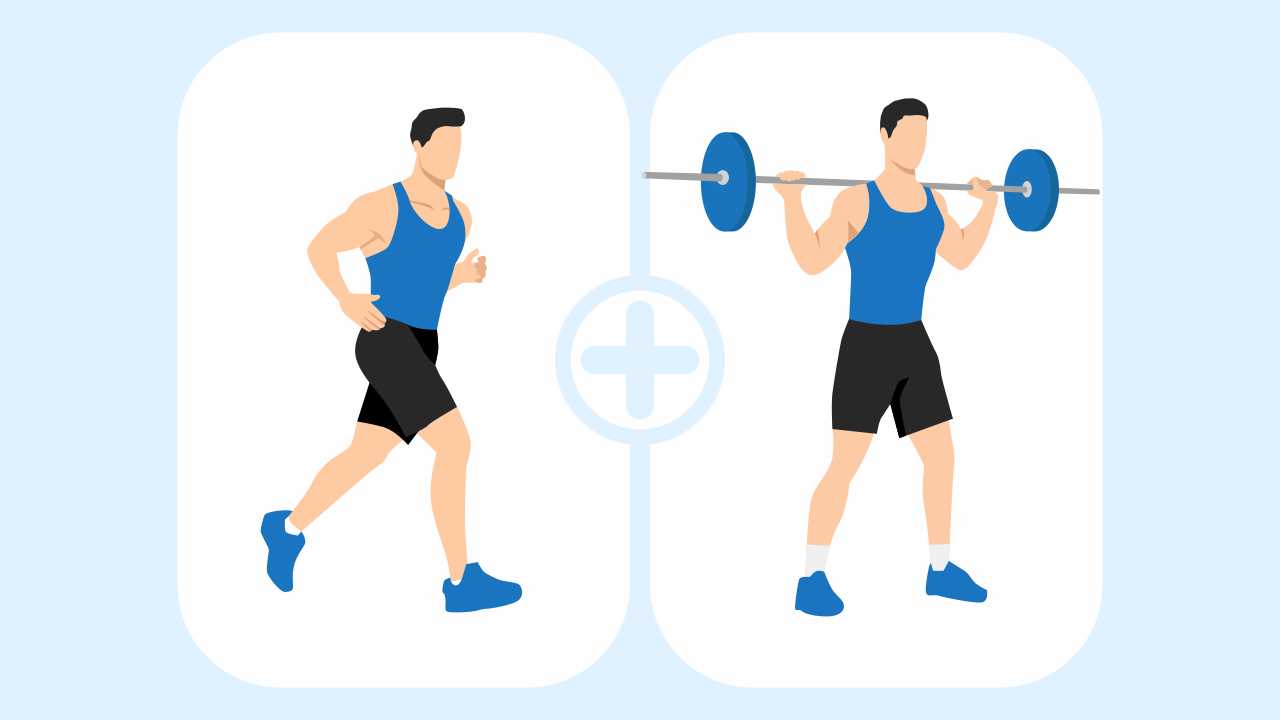
The science of distance running has established that aerobic capacity is defined by the delivery of oxygen to the leg muscles. The faster your pace, the more is the demand for oxygen. Although strength training may not improve oxygen delivery to the muscles, it can help you get faster because increasing strength will translate to increasing power.
The energy generated by the body through food can only be put to use by the intensity of the movement of skeletal muscle and neuromuscular coordination, which is the interaction of the nervous system with muscle. So, strength training for runners has to have a goal of increasing the rate of force production when landing on the ground and taking off with each stride.
A study investigating endurance performance showed that the intervention group that did strength training improved explosive strength and had enhanced aerobic capacity as well as an increase in the maximal aerobic speed.
It has been well established that runners need to strength-train their lower body because these muscles take the direct load of pounding and have to generate enough force and power for propulsion. Such training reduces or corrects muscle imbalances and enhances muscle activation
Strength training boosts strength in the lower limbs, resulting in a runner’s ability to create and rapidly absorb force against the ground through increased recruitment of various muscles and neuromuscular activation.
Explosive forms of strength training such as plyometric training wherein the force is generated in a short time, helps in the development of muscular power. This form of training results in neuromuscular adaptations and rate of force development. Each time you take a stride when running and you land on the foot, the push-off is a form of plyometric movement.
Benefits of strength training for runners
1. Improves running biomechanics
When your body lands on one foot, a load between 2–5 times your body weight goes up the leg. If leg muscles are not strong enough to take this load, it can result in an inefficient gait. It is important to ensure a proper posture when running, and this can happen if your body is well-aligned during each phase of running gait. Developing leg strength is key to good alignment.
2. Results in better muscle contractility
For efficient running, the lower extremities have to develop a good spring-like action during each stride. The Achilles tendon, calf, and hamstring store energy when you land on your foot. Then, this stored energy is released much like when a spring is compressed and released. The greater this spring action, the higher is the propulsive force. Strength training leg muscles helps them to store and release a greater amount of energy.
3. Reduces the risk of injury
During movement, the body is connected in what is called a kinetic chain. This means that forces at the foot or ankle are seen all along the leg from calf to knee to hamstrings, and quads to the hip. Any imbalance in each of these sections or between the right side and left side of the body will result in compensation at other points. When this process gets repeated, the weak links will result in injury.
4. Leads to improved muscle activation
The body muscles need to be recruited to develop force or power. When you do not strength-train, these muscles become weak and do not respond easily to demands for force generation. Strength training using multi-joint and large muscles results in improved recruitment patterns, which allows forces to be developed to aid your run.
5. Improves bone strength
Bone formation is directly proportional to the load placed on the bone. Although in running, bodyweight places a load on bones of the lower extremities, strength training with external load will result in stronger bones and lower the chances of fractures in training.
6. Helps improve your posture
Your running form will decide your running gait. So, ensure a proper posture when running. Most cues for showing proper form will ask you to run tall, which means that you need to stay upright with your shoulder retracted and chest open. In order to do this, you should have a strong back. In addition, you need to have a strong core to prevent your upper body from collapsing into a slouch.
7. Aids in improved arm swing
In distance running, you need to keep a smooth rhythm with an arm swing that synchronizes with your stride. Arms that are not strong will tire as you encounter fatigue in your long runs due to which your form and rhythm will falter. So, it is recommended to strength-train your arms and shoulders effectively to ensure that they are strong.
8. Results in enhanced muscle glycogen
The body stores carbohydrates in the form of glycogen within muscle cells, which becomes the source of energy for the muscle. Due to running, the legs undergo adaptation for strength, hypertrophy, and an increase in muscle glycogen storage. If you train your upper body, the increased musculature will mean that muscle glycogen is also stored and increased in the upper body. This will all go towards increasing the total size of your gas tank and delay glycogen depletion.
Recommendations for strength and plyometric training
| Mode | Frequency | Number of exercises | Load | Volume |
| Strength | 2-3 times/week | 3-4 lower limb exercises 2-3 upper body exercises | > 85% 1 Repetition Maximum (RM) | 3 sets; 6-8 repetitions (reps) |
| Plyometric | 2-3 times/week | 5-8 plyometric exercises | Bodyweight | 3 sets; 8-10 reps |
Strength exercises that runners should incorporate
Here are the different types of workouts that runners should include in their day-to-day regime along with the steps to perform them.
Lower body workouts
Also read: Leg Workout for Runners to Build Lower Body Strength
1. Barbell squat
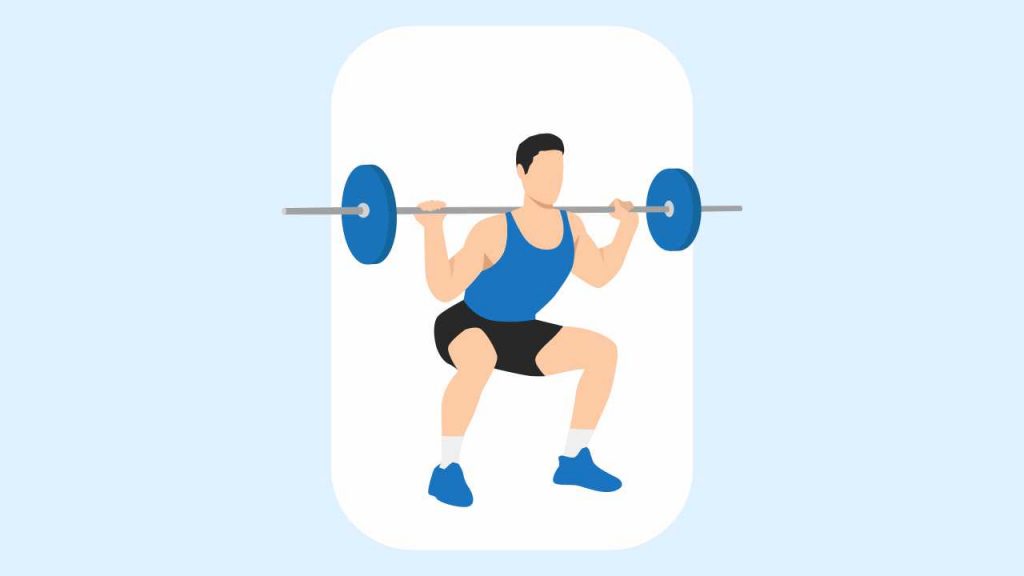
- Keep the barbell racked properly on your back; it is on the shelf that is created when you retract your shoulder blades.
- Take a deep breath embracing your core. This allows to raise the intra-abdominal pressure and provides rigidity to the spine.
- Grab the floor with your feet, keeping the weight of your body in the centre of your feet.
- Rotate at the hips externally, preloading the muscles of the hip.
- Start the eccentric phase lowering your hips down.
- Attain the desired depth ideally to the point where your knees are higher than the crease of your hips.
- Begin the eccentric phase lifting your chest and hips at the same time.
2. Barbell deadlift
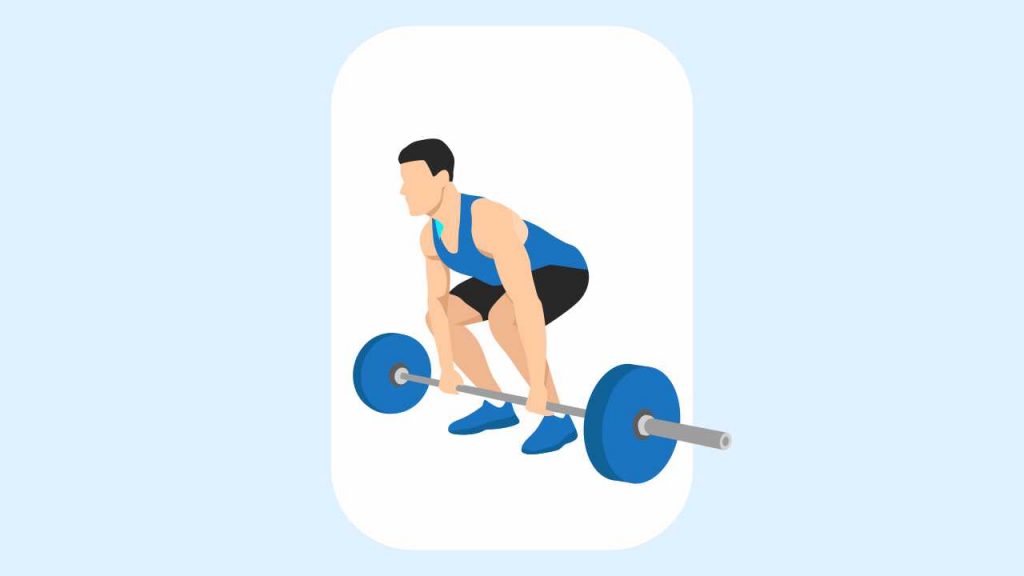
- Choose an appropriate weight for the barbell and place the equipment on the ground such that the forefoot is under the bar. Keep your feet shoulder-width apart.
- Bend forward with a straight back and grip the bar with an overhand grip; the palm should be facing toward your body, a little more than shoulder-width apart. To do this, squat down a little bit and bend your knees. Your head should be in line with your spine.
- Think of the hip as a hinge and lift the bar off the ground by straightening up. The knees and hips will extend smoothly and the shoulders will push back as the bar reaches the thighs. Remember that if the transition from bending over to straightening up is done in proper form, the bar will graze the shins and knees on its way up.
- Lower the bar slowly, ensuring you keep a straight back again.
- Perform six to eight reps. Do two to three sets.
3. Walking dumbbell lunge

- Stand with your feet hip-width apart. Keep your back straight and tall.
- Take a step forward with your right foot and plant it roughly 2 feet away. This will force you to lift your left heel off the ground. Use dumbbells in each hand for added weight.
- Engage your core and lower your left knee to the floor, bringing it close to the ground. This will result in your right knee forming a right angle and the thigh coming parallel to the ground.
- Press your right foot firmly into the ground and rise by straightening the right leg. Once you have fully straightened up, swing the left foot forward and plant it similarly about 2 feet in front.
- Repeat the same sequence as above and progress in a forward motion.
4. Calf raise
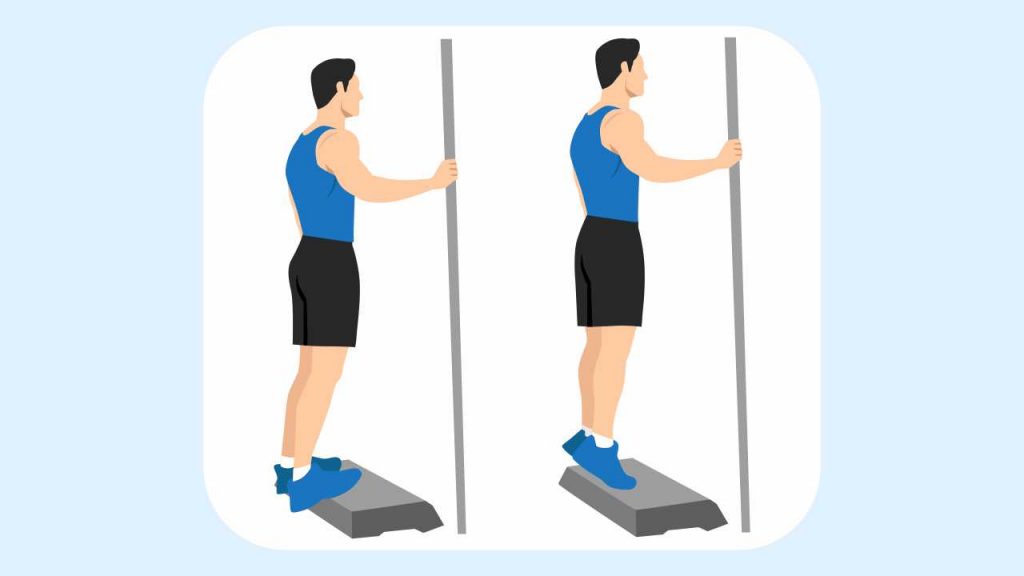
- Stand upright on a platform with your feet flat on the platform and heel off the platform.
- Tighten your abdominal muscles and slowly lift your heels off the platform while keeping the ball of the feet planted firmly.
- Make sure to lift the heels to the highest possible level so that your calves feel a full contraction.
- Lower your heels back as slow as possible.
- Perform 10 to 15 reps. Do two to three sets.
5. Leg press

- Load the machine with the desired weight. Sit down and position your feet on the platform with a shoulder width distance between your feet.
- Take a deep breath, extend your legs, and unlock the safeties.
- Lower the weight under control until the legs are roughly at an angle of 45 degrees.
- Drive the weight back to the starting position by extending the knees but don’t forcefully lockout.
- Repeat this workout for the desired number of reps.
Upper body exercises
Also read: Upper Body Strength Exercises for Runners
1. Bench press
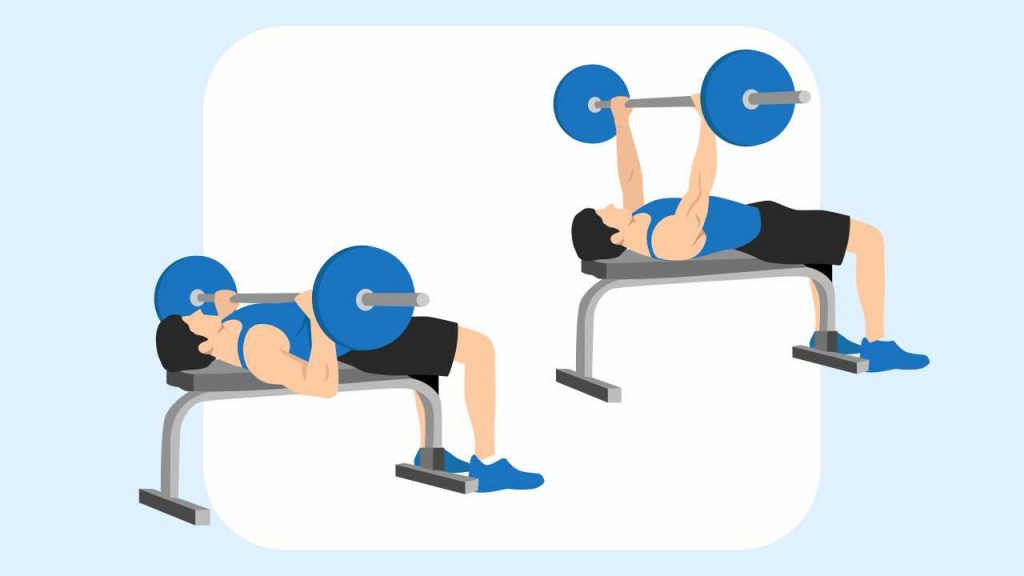
- Position the body in a way that the bar or handles are about mid-chest level at the starting position. As you extend your arms, exhale until they are straight.
- Inhale as your arms flex back to the starting position. As this is a pushing exercise, it focuses on the chest, triceps, and front/side shoulders.
- Perform two to three sets of 12-15 reps.
2. Barbell rowing
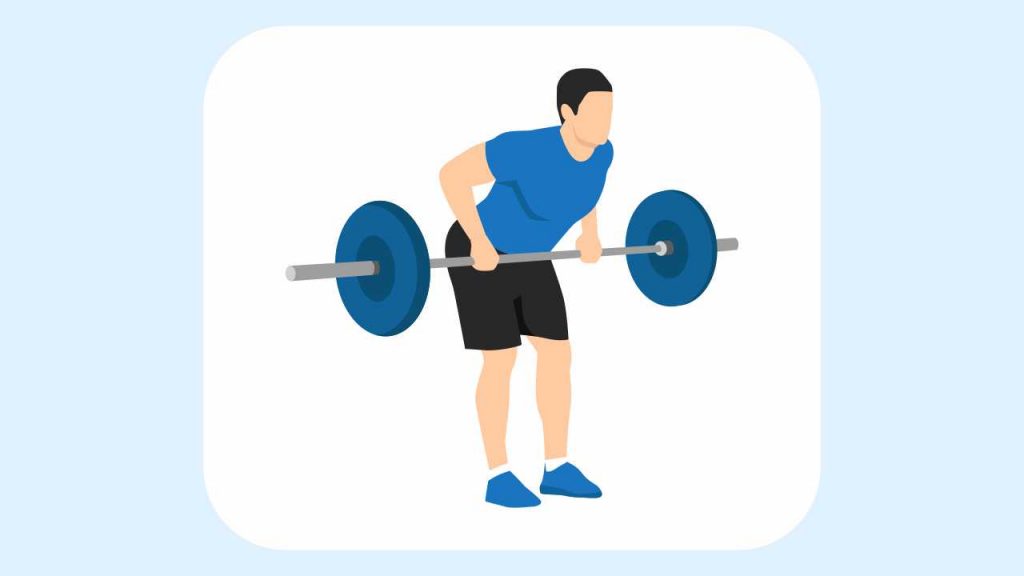
- Assume a standing position while holding the bar using a double overhand grip with your hands shoulder-width apart.
- Hinge forward until your torso is roughly parallel or slightly above the floor and begin the movement by driving the elbows behind the body while retracting the shoulder blades.
- Pull the bar towards your belly and slowly lower the bar back to the starting position under control.
- Repeat for desired repetitions.
3. Barbell shoulder press

- Stand with your feet slightly wider than hip-width apart.
- Grab the barbell firmly with both hands in a pronated grip.
- Raise the bar to the shoulder level and position the hands so that the palms face forward and to the side of the ears. Then, extend the arms overhead until the arms are straight and slowly lower to the starting position.
- Perform two to three sets of 12-15 reps.
4. Lat pull downs
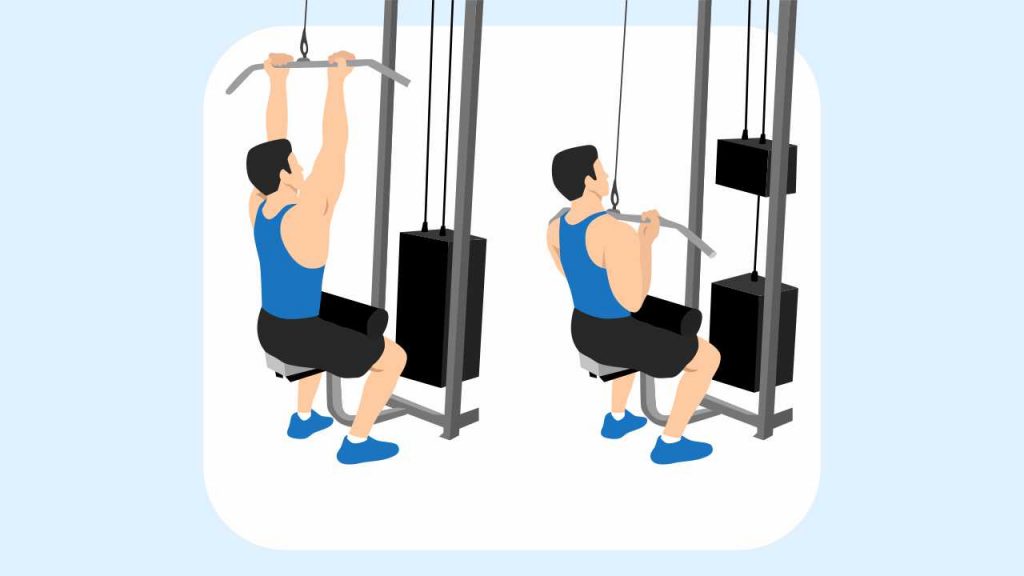
- Sit facing the machine and hold the bar with both hands, keeping a distance that is slightly wider than your shoulders with an overhand grip.
- Lean back slightly to get in line to pull the bar.
- Activate your latissimus muscle by retracting your shoulders. Now, pull the bar down towards your chest by adducting the shoulders and flexing at the elbows.
- Pull the bar above or until it touches your upper chest.
- Allow the bar to slowly rise back up to the starting position.
Plyometric exercises
1. Single-leg hops
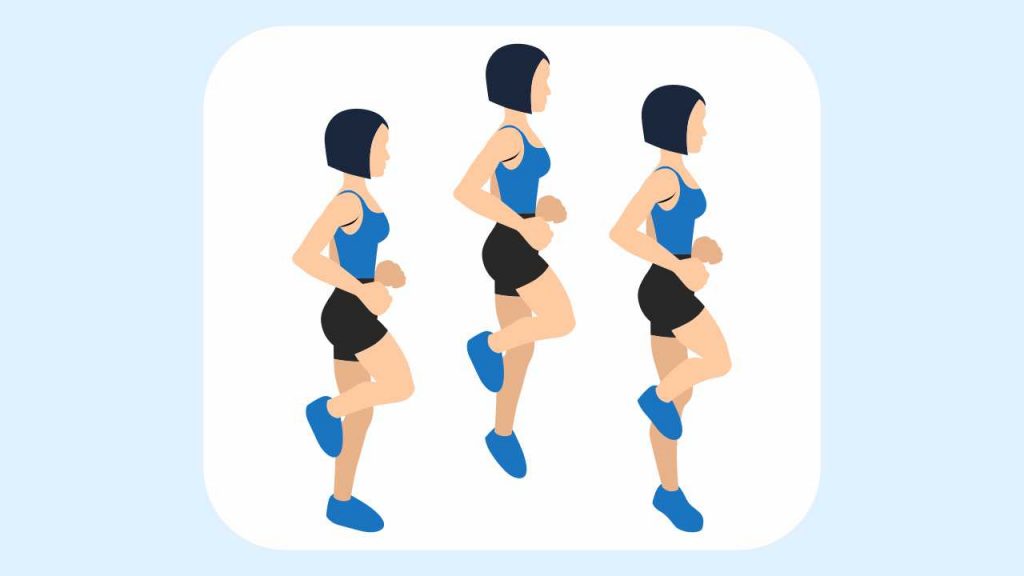
- Stand with your feet together and your hands in front or by the sides.
- Raise your left leg, balancing on your right foot.
- Jump up and land on the ball of your right foot.
- Jump up as soon as you land and repeat for desired reps. Once you have completed the right leg, perform the jumps on the left leg.
2. Double-leg hops
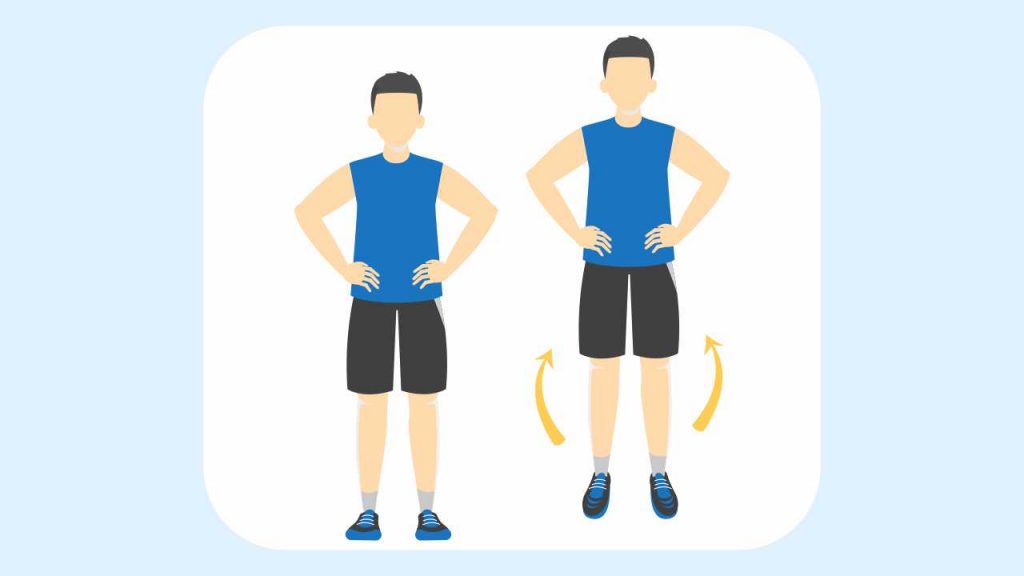
- Stand with your feet together and hands in front or by the sides.
- Jump up and land on the ball of both feet.
- Jump up as soon as you land and repeat this movement for desired reps.
3. Alternate leg bounds

- Begin running; once you have picked up speed after a few strides, launch yourself up and forward using your right leg.
- Land softly on your left foot and immediately launch yourself once again generating force from the left foot.
- Continue bounding alternating between legs for a particular duration or desired number of reps.
4. Squat jumps
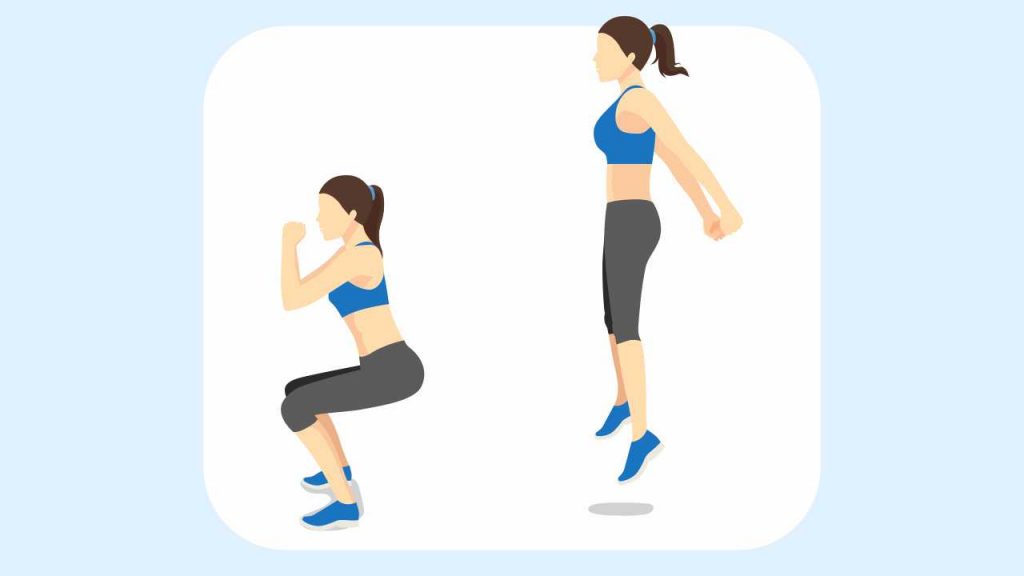
- Stand with feet shoulder-width apart and keep your knees unlocked.
- Descend into a squat using the cues stated above by bending at the knees.
- Activate your quads, glutes, and hamstrings and explode off the floor by straightening the knees and hips from their bent position. This will result in lifting your body off the ground and your feet will be a few inches off the floor. Gravity will cause you to descend.
- Land softly on the ball of your foot and immediately go into the squat position again.
- Explode again after landing.
- Repeat this process.
- Do about two to three sets. Each set must have eight to 10 reps.
5. Split jumps
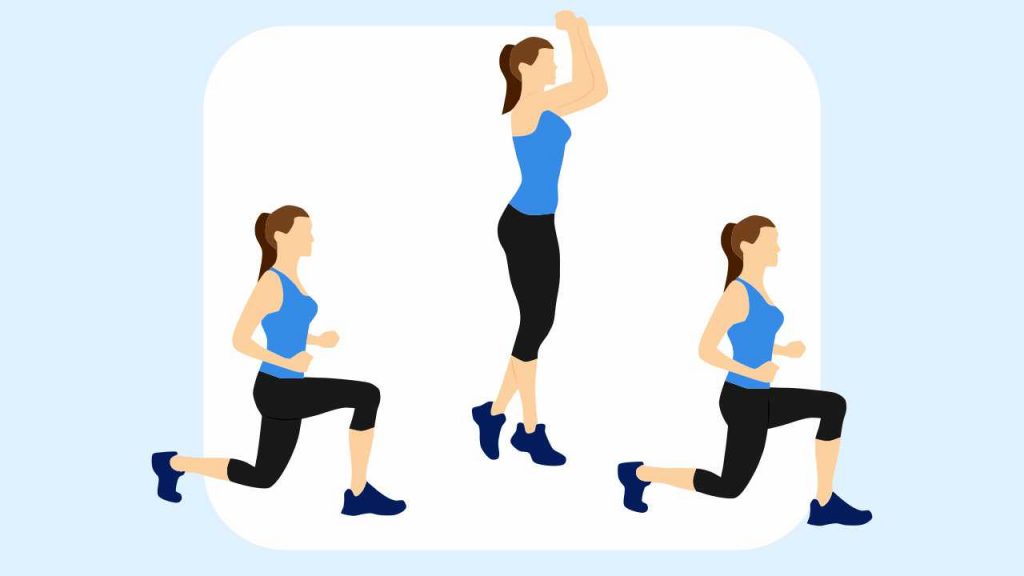
- Stand with the left leg in front and the other at the back.
- Sink into a lunge (as described for the walking lunge) with your arms bent at right angles.
- Explode upward by straightening your legs and keeping the arms bent as soon as the knee of the rear leg comes close to the ground.
- Cycle your legs such that the right leg comes forward and the left goes back while moving off the floor and in suspension.
- Land softly while descending with the right foot in front and the left foot at the rear; descend immediately into a lunge again.
- Explode again as soon as the knee comes close to the ground.
- Repeat this activity. Perform two to three sets comprising four to five reps for each leg.
6. Box jumps
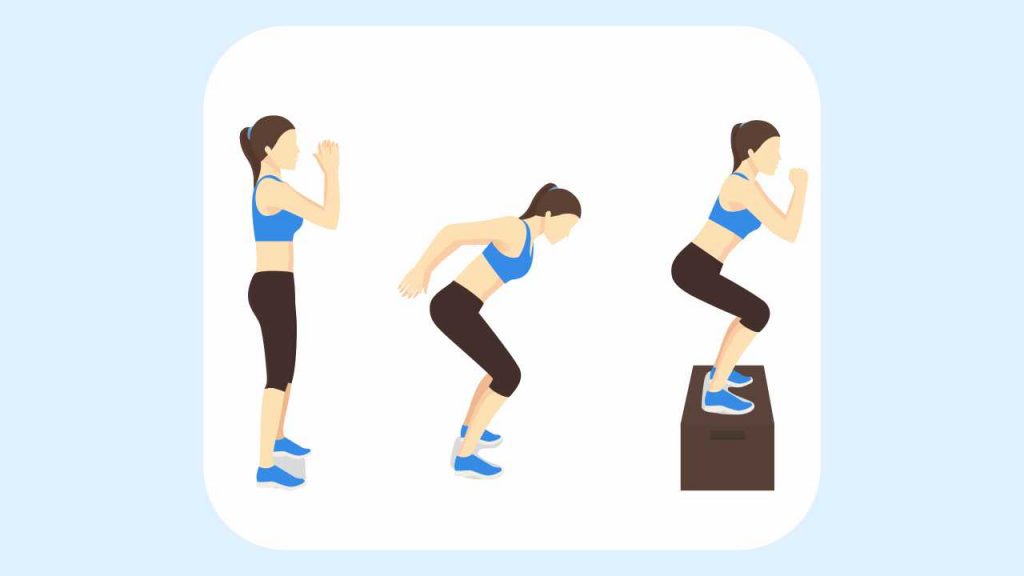
- Keep the box about one short step away.
- Stand with feet shoulder-width apart.
- Sink down into a squat with your arms swinging back at the same time.
- Explode upward by pushing off the ground with your feet. While doing this, your Achilles tendon and calves will generate force. Use your arms to now swing forward and upward to add momentum to your movement.
- Ensure you land on the box with your knees bent and have a soft landing.
- Step off the box.
- Perform about five to eight reps and two to three sets.
- Make sure to recover well between each jump.
7. Depth jumps
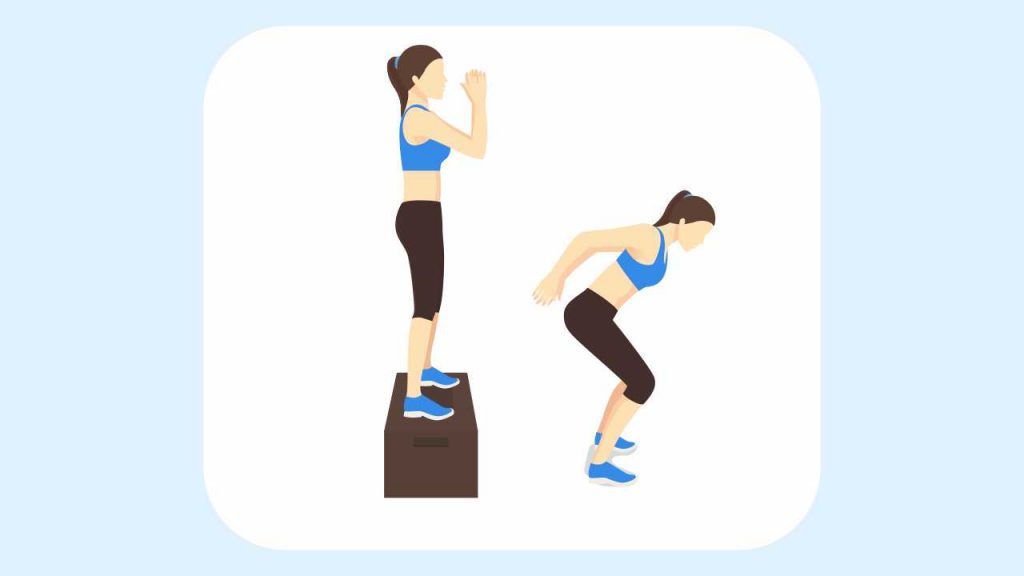
- Stand on an elevated box.
- Step off the box and land on the floor. As you land on the floor, explode into a jump.
- Step up back again on the box and repeat the movement.
8. Double-leg hurdle jumps

- Stand in front of hurdles placed one after the other with some distance between them.
- Begin by jumping both your feet off the ground and over the first hurdle. As you land, explode into a jump again over the next hurdle.
- Continue jumping over hurdles with both your feet until you have finished jumping over all the hurdles.
9. Single-leg hurdle jumps
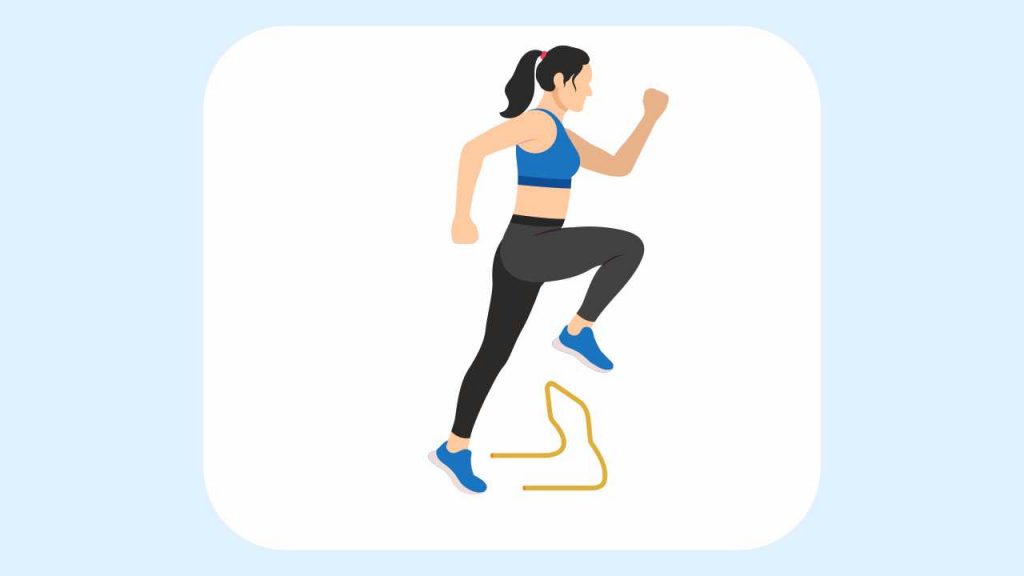
- Stand in front of hurdles placed one after the other with some distance between them.
- Begin by jumping your right foot off the ground and over the first hurdle. As you land, explode into a jump again over the next hurdle.
- Continue jumping over hurdles with your right foot until you have finished jumping over all the hurdles.
- Repeat the jumps with your left foot.
What does a runner’s strength training regime look like?
Here is an ideal strength training routine when incorporated into a runner’s schedule:
| Weekly schedule | Monday | Tuesday | Wednesday | Thursday | Friday | Saturday | Sunday |
| Running 5 times a week | Rest | AM: Speed intervals PM: Strength workout | Easy run | Tempo run | Strength workout | Easy run | Long run |
| Running 4 times a week | Rest | Alternate: Speed intervals / Tempo run | Strength workout | Easy run | Strength workout | Easy run | Long run |
Where to place strength training in your training regime
Lifting heavier weights and performing too many sets can lead to fatigue, which can interfere with your running training. Also, explosive exercises such as depth jumps and hurdle jumps can cause transmission of large forces through your muscles, tendons, and bones, which may cause injury if you begin such a program without first developing adequate strength. So, the right progression and placement are important.
It is suggested to place your strength training session right after or on the same day when you do a hard running workout. Another alternative is to do strength training workouts right before a recovery day from running. So, you may do running on Tuesday, strength training on Wednesday, and rest on Thursday. It is not advisable to strength train on rest days as those days are strictly meant for recovery and rejuvenation.
Now that you have an idea of how to incorporate strength training in your running schedule and which are the most suitable strength training exercises for runners, go ahead and add these workouts to your schedule.














